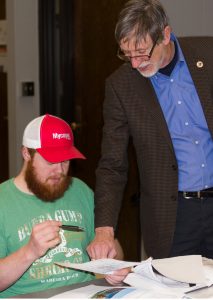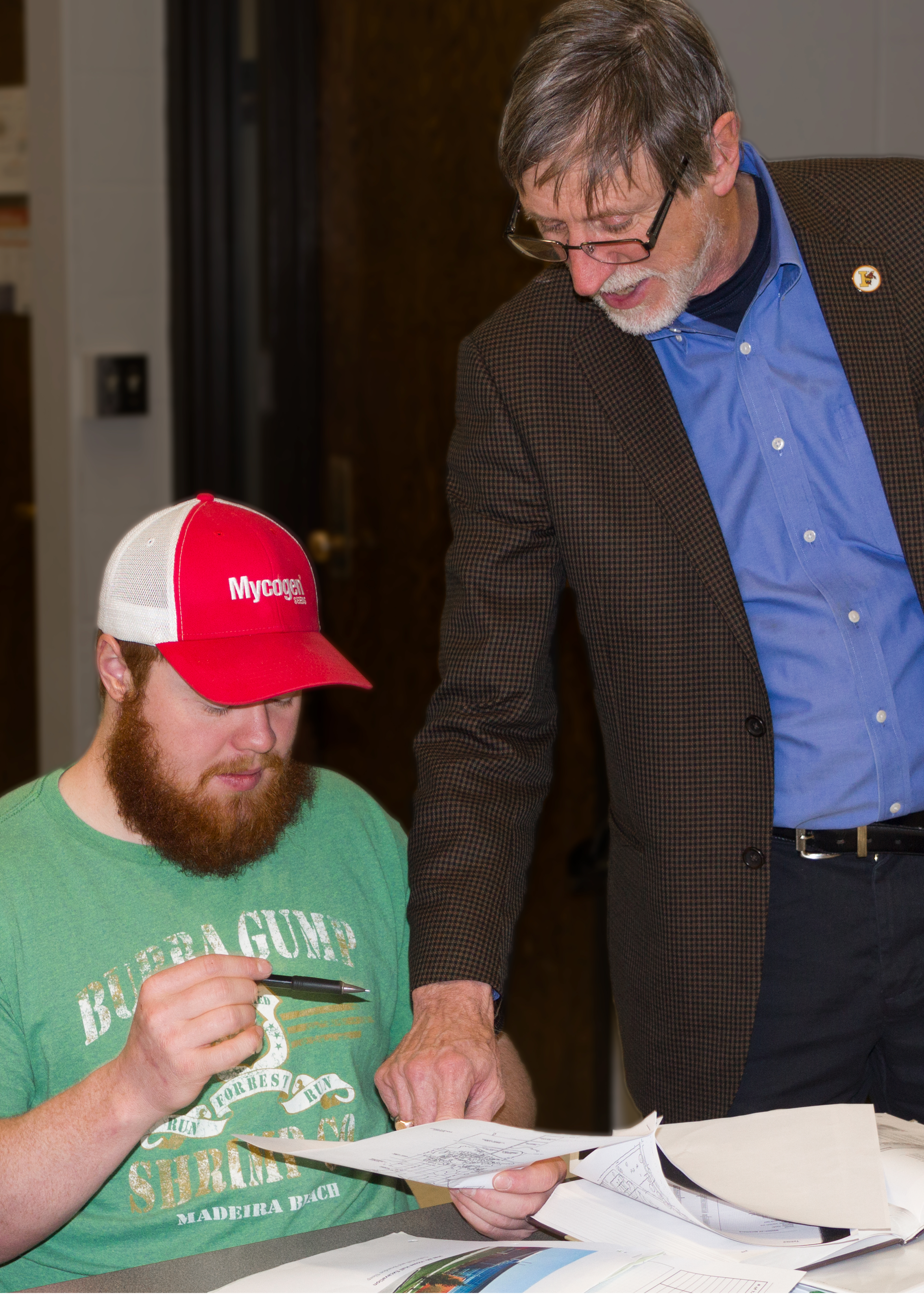Professors use newest learning models to encourage real-world problem-solving

Brandon Sleep preps thoroughly for any construction engineering (ConE) 322 lecture. He doesn’t mind watching video lectures outside of class. That’s because ConE 322 is a hybrid learning classroom. Students have to come prepared.
“We do the homework in class, and we have a guide from the lectures to go by,” Sleep says, describing ConE 322: Construction Equipment and Heavy Construction Methods.
Defining active learning and hybrid learning
Active learning, hybrid learning, blended learning, team-based learning … there are many terms swirling around the discussion of teaching methods within and outside the classroom. Let’s start by defining some of these terms.
Hybrid learning and blended learning are the same thing. These methods combine traditional class time with online course work. Students may watch a video lecture leading up to a class in which they work on real-life or ill-structured problems (more on that term in a minute). A special fact to note: hybrid learning classes trade some class time for out-of-class work. A cancelled lecture allows more time for out-of-class learning.
Ill-structured problems are problems where there are multiple answers to any single question. Active learning is a broad term used to describe any teaching method that engages participants in learning. Team-based learning, flipping a classroom so students are teaching their peers and case studies are all examples of active learning tactics.
Active/hybrid learning at CCEE
Iowa State University’s Department of Civil, Construction and Environmental Engineering (ISU CCEE) has been implementing forms of active/hybrid learning since the early 2010s, says Dr. Charles “Chuck” Jahren. Jahren is professor-in-charge for ISU CCEE’s construction engineering program, and ConE 322 is his class.
“It’s a good way to commit important knowledge and also problem-solving approaches to long-term memory,” Jahren says. “By listening and talking with each other on a subject, you’re repeating it and through the repetition over a longer period of time things transfer from your short-term memory to your long-term memory.”
Along with recall, the benefits of the hybrid learning class include sharpening teamwork and leadership skills.
“I enjoy it,” Sleep says. “Group work is a big part of what our career is going to be. To get that experience now will help us in the future.”
Ahead of the game
Dr. Aliye Karabulut-Ilgu is a lecturer at ISU CCEE. She joined the department in 2015. While some lecturers work with students, Karabulut-Ilgu works with professors to develop active and hybrid learning classes.
“Hybrid and flipped classes make use of the opportunities provided by online and face-to-face instruction,” she explains. “Students can watch online lectures on their own time and at their own pace. The students I have talked to indicate that they like being able to pause a lecture and take notes. It also encourages them to be better prepared for face-to-face activities.”
Karabulut-Ilgu’s role is unique. Not every department has a course development specialist. Currently, ISU CCEE offers seven active/hybrid learning classes, with eight different professors leading or team-teaching classes. Karabulut-Ilgu works with all of them.
“In the CCEE department, we have hybrid courses starting from freshman and sophomore levels to senior levels,” she says. “Being exposed to this kind of teaching at the early years of their undergraduate education help students become familiar with the approach and then understand the course expectations better when they take a similar course in the department or in another department. Through active/hybrid classes, our instructors can create time during class to have their students work on real-life engineering problems.”
Of course, active/hybrid learning classes come with their own challenges. Students (Sleep included) say that you can fall behind quickly if you don’t do work or listen to lectures outside class. Certain courses fit the active/hybrid learning format better than others.
“It just depends on the course,” Sleep says. “Some courses it’s good for and some it’s better to have more traditional classroom settings.”
He adds that a student interested in “getting ahead of the game” by completing material outside of class will do well. Overall, the stretch from traditional classroom to active/hybrid learning could be a perfect fit for young engineers training to solve real-life problems.
“It seems natural,” Jahren says. “Students just fall into it.”
